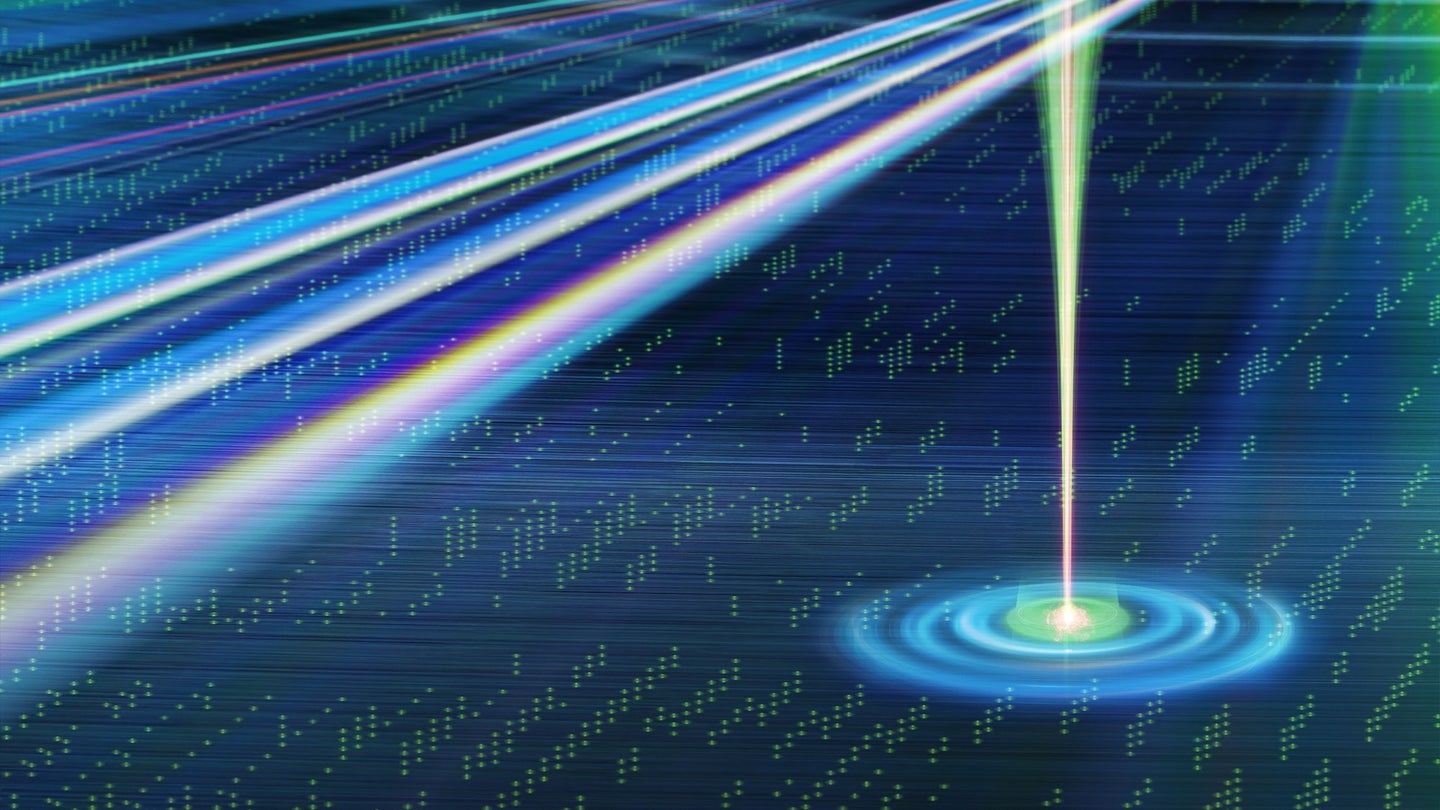This DVD-sized disk can store a massive 125,000 gigabytes of data
It can hold the same amount of information as 10,000 Blu-rays.

Even in a digital-first world, optical disks like DVDs and Blu-rays still have their many uses. But despite being cheap, sturdy, and small, they can’t keep up with today’s storage needs. This is because, spatially speaking, optical disks almost always offer just a single, 2D layer–that reflective, silver underside–for data encoding. If you could boost a disk’s number of available, encodable layers, however, you could hypothetically gain a massive amount of extra space.
Researchers at the University of Shanghai for Science and Technology recently set out to do just that, and published the results earlier this week in the journal, Nature. Using a 54-nanometer laser, the team managed to record a 100 layers of data onto an optical disk, with each tier separated by just 1 micrometer. The final result is an optical disk with a three-dimensional stack of data layers capable of holding a whopping 1 petabit (Pb) of information—that’s equivalent to 125,000 gigabytes of data.
[Related: Inside the search for the best way to save humanity’s data.]
This is a bonkers amount of data compared to what can currently reside on even the most high-end flash or hybrid hard drives (HHDs). As Gizmodo offers for reference, that same petabit of information would require roughly a six-and-a-half foot tall stack of HHD drives—if you tried to encode the same amount of data onto Blu-rays, you’d need around 10,000 blank ones to complete your (extremely inefficient) challenge.
To pull off their accomplishment, engineers needed to create an entirely new material for their optical disk’s film, known as (take a big breath here) “dye-doped photoresist with aggregation-induced emission luminogens.” For brevity’s sake, AIE-DDPR is apparently just fine, too. AIE-DDPR film utilizes a combination of specialized, photosensitive molecules capable of absorbing photonic data at a nanoscale level, which is then encoded using a high-tech dual-laser array.
Because AIE-DDPR is so incredibly transparent, designers could apply layer-upon-layer to an optical disk without worrying about degrading the overall data. This basically generated a 3D “box” for digitized information, thus exponentially raising the normal-sized disk’s capacity.
But how much is a petabit, really? According to ZME Science, datasets used to train generative AI can include roughly 5.8 billion indexed webpages, totalling about 56 Pb of data. So, hypothetically, instead of relying on unsustainably energy-hungry data centers, one could conceivably fit all of ChatGPT’s training material in one of those retro CD album trapper keepers from the 2000s.
Unfortunately, a CD folder containing enough data to train your own AI program isn’t likely to arrive anytime soon. Creating the cutting-edge optical disk reportedly takes quite a while, and is still comparatively energy inefficient. Still, researchers believe they can solve for both hindrances with further experimentation and innovation. If so, some of the biggest issues in modern data management could be tackled by literally building upon a decades’ old physical format.
